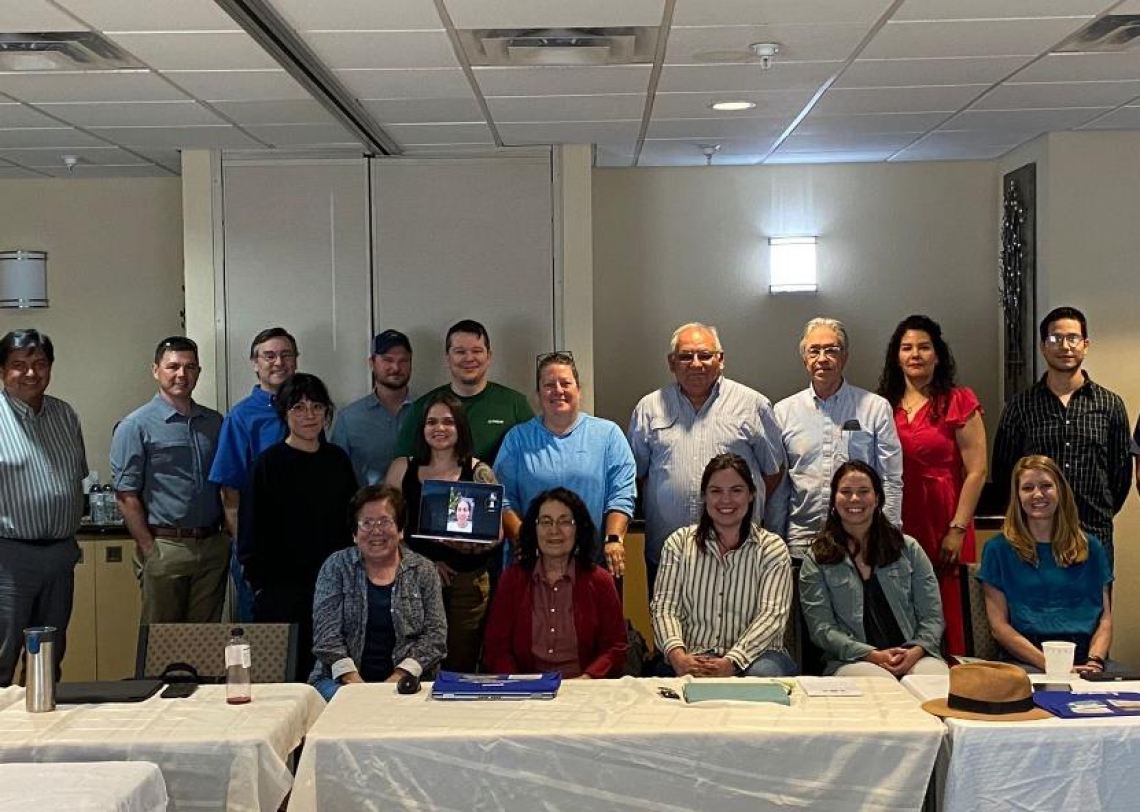TAAP Team Members met to talk about past, current, and future collaboration on transboundary aquifers

Miembros del equipo de IBWC, USGS, TWRI, NMWRRI, Universidad de Sonora, and the WRRC.
On June 7, 2023, team members of the Transboundary Aquifer Assessment Program (TAAP) gathered in Nogales, Arizona for a productive meeting focused on past, current, and future research efforts and collaboration. The meeting brought together representatives from various institutions, including the Water Resources Research Center (WRRC), the New Mexico Water Resources Research Institute, the Texas Water Resources Institute, the United States Geological Survey, Universidad de Sonora in Mexico, and the U.S. Section of the International Boundary and Water Commission (IBWC).
The transboundary Santa Cruz, San Pedro, Mesilla, and Hueco Bolson aquifers, often referred to as the TAAP aquifers of focus, are shared by the United States and Mexico and have been actively studied following the framework established by the 2009 IBWC "Joint Report of the Principal Engineers Regarding the Joint Cooperative Process United States-Mexico for the Transboundary Aquifer Assessment Program" (TAAP Cooperative Framework).
During the meeting, the team provided an overview of collaborative TAAP efforts undertaken to date, followed by presentations from Luis Mendoza of Universidad de Sonora and Libbby Wildermuth from the USGS, focusing on current and future work related to Quitobaquito Springs in the U.S. and the Quitovac region in Mexico. Elia Tapia from Universidad de Sonora also shared insights on the Santa Cruz River Aquifer Hydrologic Efforts, while Grisel Gutiérrez, from the same institution, presented the transboundary hydrogeologic mapping developed for certain Arizona-Sonora border aquifers.
Following the presentations, an open discussion was held to explore further opportunities for collaboration among the participants. The ongoing efforts of TAAP have significantly contributed to the enhanced understanding of the TAAP aquifers of focus.

